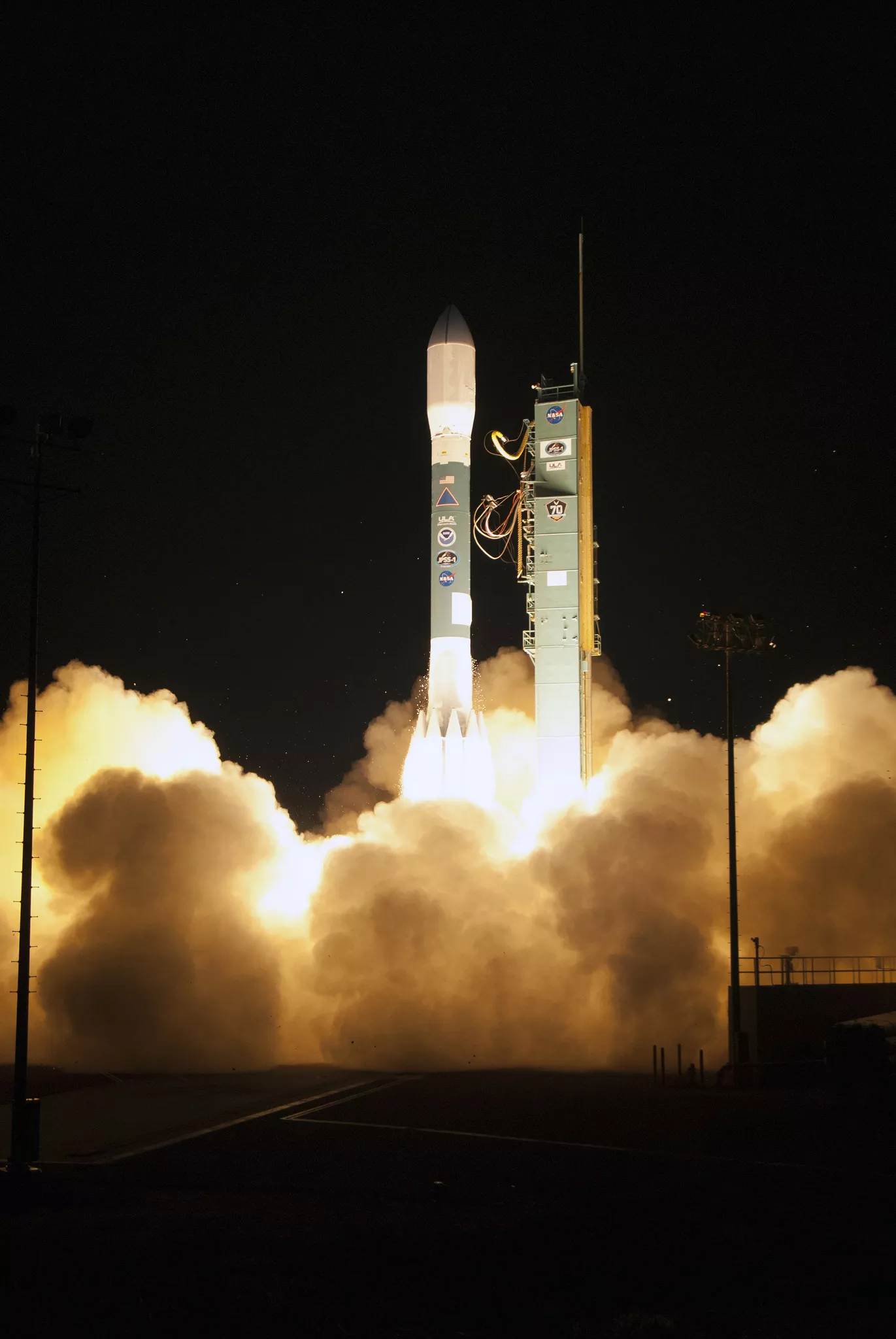
Approximately one hour after liftoff, when JPSS-1 separated from the upper stage of the Delta II launch vehicle and its solar array deployed, the launch of NOAA’s newest polar-orbiting satellite was officially deemed a success. Mission accomplished then, right?
Not quite. Despite making it to space and orbiting on its own, JPSS-1 (now known as NOAA-20) won't be declared operation for several months after launch. So what is the satellite doing up there during the interim? It’s getting checked-out by scores of engineers and scientists from NASA, NOAA, and the Joint Polar Satellite System’s industry partners—Ball Aerospace, Raytheon Space and Airborne Systems, Northrop Grumman Aerospace Systems, and Harris Corporation— who will test everything from the satellite’s communications systems to its scientific instruments.
This period of checks and tests—aptly referred to as the “checkout phase,” but it’s also known as “post-launch testing”—began Saturday, November 18, 2017, immediately after the satellite separated from the upper stage of the Delta II and began orbiting freely in space. At this time, the Mission Operations Support Team (or MOST), a group of about 50 engineers, begins executing an orderly, round-the-clock plan for evaluating just about every piece of hardware on NOAA-20. This plan continues until the satellite is deemed ready for handover to NOAA for routine operations.
Four Sub-phases and Orbit-Raising
NOAA-20’s checkout phase began immediately after the satellite separated from the upper stage of the Delta II and began orbiting freely in space, as shown in the animation above provided by Ball Aerospace.
In general, the checkout phase consists of four sub-phases: spacecraft commissioning, outgassing, instrument activation and instrument performance characterization, and operational science testing. It is important to note, however, that these sub-phases do not take place in linear fashion, occurring one after the other. Often, tests from different sub-phases take place simultaneously. For example, although instrument activation and testing activities generally take place after the commissioning of the systems on the spacecraft, some instrument testing is done in concert with spacecraft commissioning initiatives. In addition, the satellite’s orbit-raising (see sidebar) typically occurs simultaneously with the early sub-phases.
Commissioning the Spacecraft
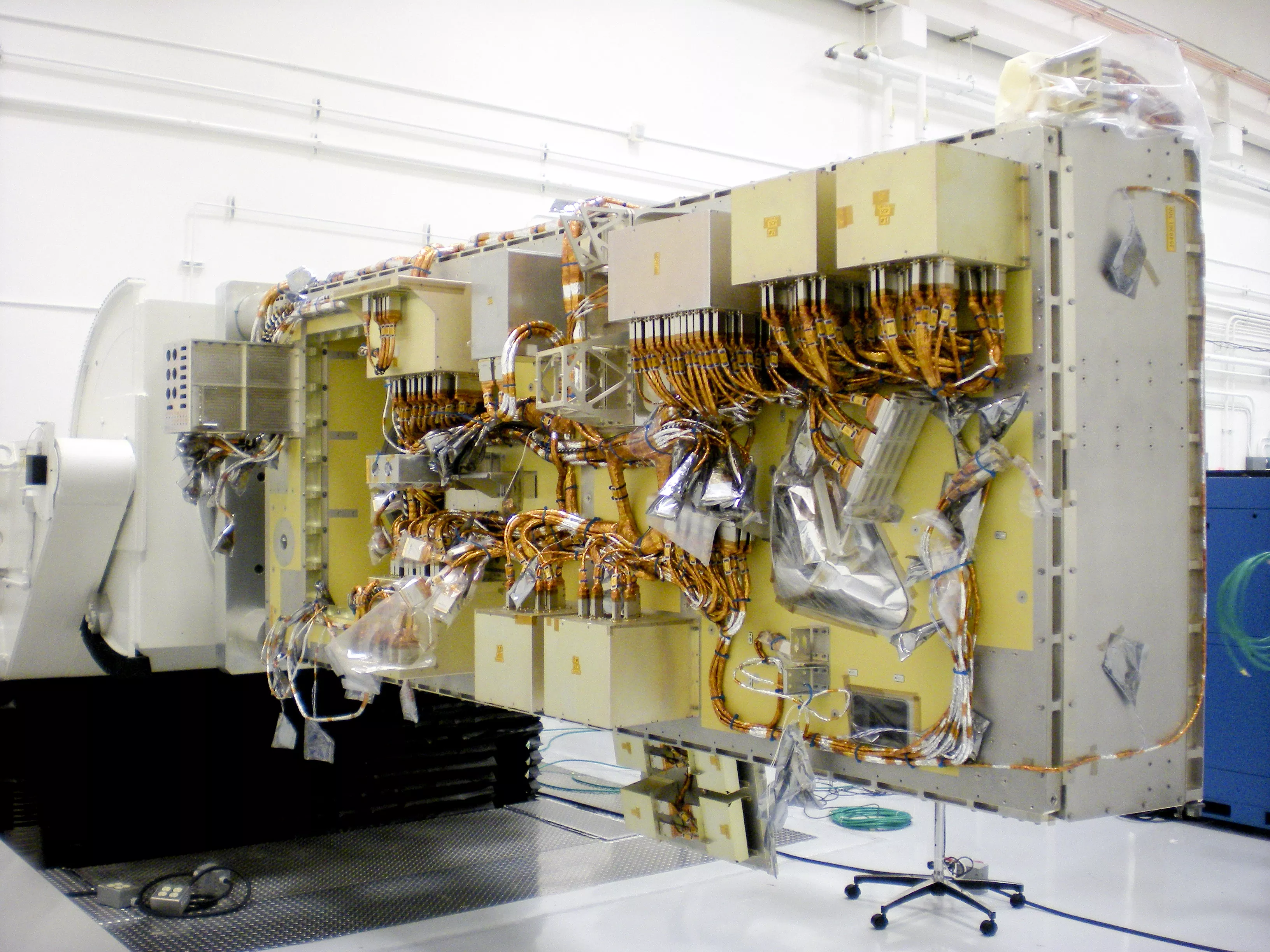
The JPSS-1 spacecraft bus Credit: Ball Aerospace
The spacecraft commissioning sub-phase, which begins soon after launch, focuses on tests of the spacecraft’s primary systems.
“[The spacecraft] has a number of systems that run the satellite,” said Tom Wrublewski, Physical Scientist with NOAA’s Joint Polar Satellite System program. “The key ones are the power system: the solar array has to deploy right after launch to recharge the batteries; the attitude control system, which keeps the satellite flying right and facing the earth; the communication system, which is composed of several antennas and transmitters that send both health and safety or housekeeping data to the operators and mission data to ground stations; and the computer/data system that monitors and controls the spacecraft in flight to make sure everything is operating smoothly.”
Also included in this sub-phase are checks of the satellite’s propulsion system, which is used during orbit-raising, station-keeping and then at the end of mission to de-orbit the satellite safely into the ocean.
Activating and Outgassing the Instruments
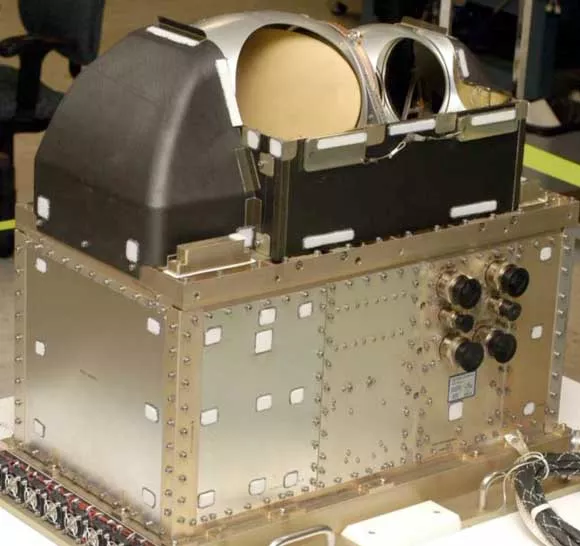
NOAA-20's Advanced Technology Microwave Sounder was the first instrument to be turned on and the first to send back science data.
In the second sub-phase, engineers shift their focus to NOAA-20’s instruments and to get them ready for operation. As with any other electronic device, the engineers must first to turn them on to make sure they are operating as expected, and then complete an outgassing period, before opening the doors protecting their sensors. During the outgassing period, any chemical residues or water vapor from the materials used on the satellite or in the instruments evaporates into the vacuum of space.
“You try to keep everything clean on the ground, but it’s very hard. The multi-layer insulation blankets used to protect the instruments hold water vapor and, when the satellite gets into space, the instruments use a series of heaters and the vacuum of space to drive them off. Instruments like VIIRS, CrIS, CERES, and OMPS that have sensitive optics that need to be protected from these contaminates, so we give them a chance to migrate away from the spacecraft during the early weeks [of checkout].”
Instrument Characterization, Calibration, and Operational Science Testing
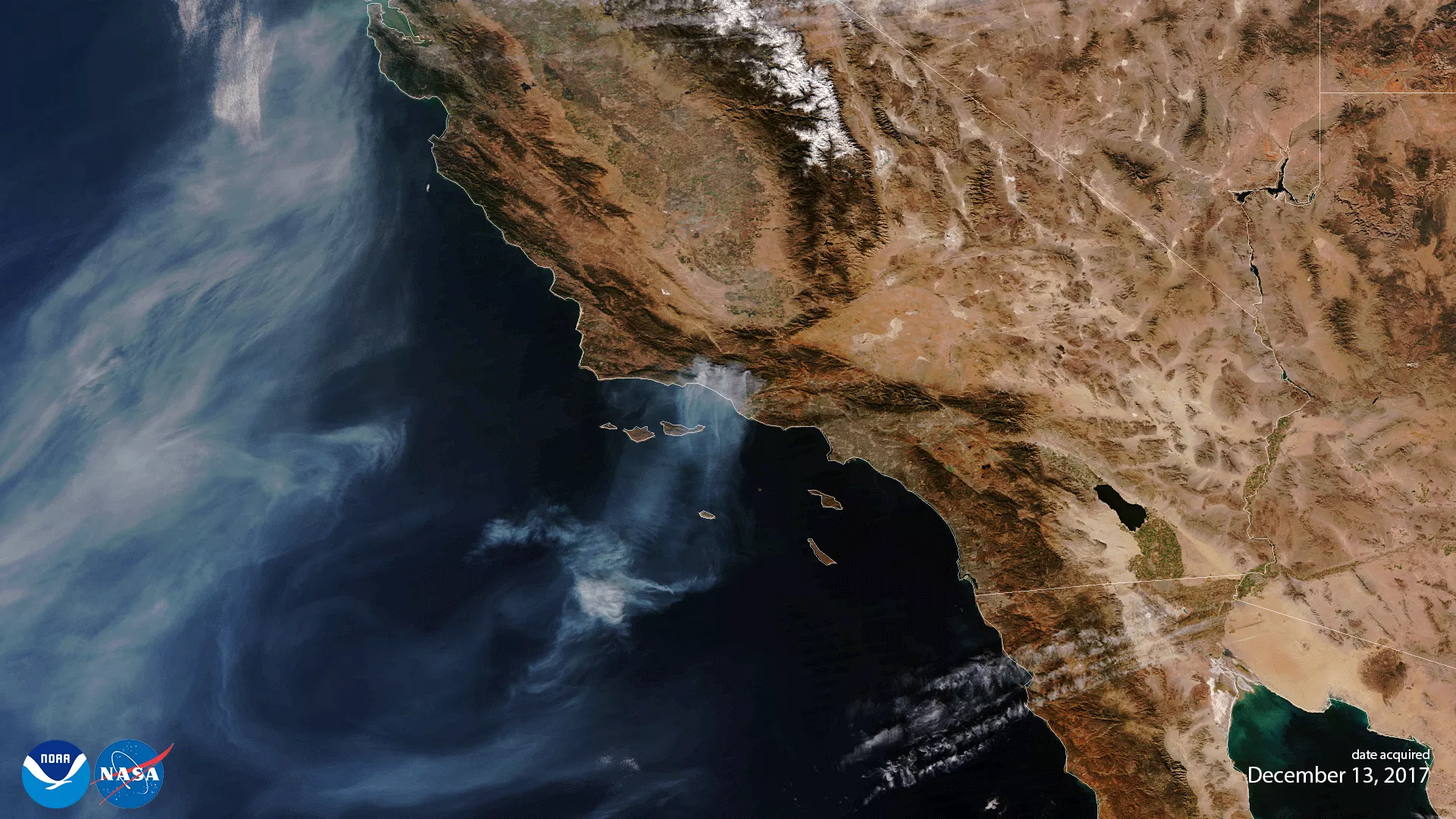
This image of the recent fires near Santa Barbara, California, was created with data from NOAA-20's Visible Infrared Imaging Radiometer Suite Instrument.
Following activation and outgassing of the instruments, the next sub-phase pertains to their characterization, calibration and validation, which is a fancy way of saying that engineers are checking to see if the instruments are performing as expected based on pre-launch tests, and in comparison to the instruments on NOAA-20’s predecessor, the NOAA-NASA Suomi NPP satellite.
“What they’re doing is checking performance against the pre-launch measurements,” said Wrublewski. They are making sure the instruments survived the harsh launch conditions and that there are no surprises.
Among the tests performed on the instruments during this sub-phase involve a series of maneuvers, including rolls (side-to-side movements), yaws (twisting the spacecraft left and right) and a pitch or “back flip,” in which the satellite is flipped 180 degrees.
Although performed for a variety of reasons, these maneuvers are designed to give the satellites engineers and operators a better understanding the interactions between the instruments and the spacecraft, and how various aspects of the space environment are affecting the sensors (e.g., the amount of light reaching sensitive instrument sensors, etc).
The final sub-phase, operational science testing, involves inspecting the quality of the instrument data, or as Bryan Fafaul, project manager with the Joint Polar Satellite System Flight Project put it, “Making sure the instrument data sent back via the ground system are what you think they’re supposed to be.”
Learning Things is Expected
There are moments during the checkout phase, however, when instrument data or something associated with a satellite subsystem doesn’t behave as expected. When things don’t behave as they should, this doesn’t necessarily mean you have an issue, but you need to understand the anomalous behavior, said Fafaul.
“You expect to learn things after launching a satellite. It’ll never be perfect because you can’t test exactly for how the satellite or its instruments will behave in space while they’re still on-the-ground,” he said. “Once you get the satellite up there and all the systems are working, anomalies will occur.”
So what happens when an anomaly occurs?
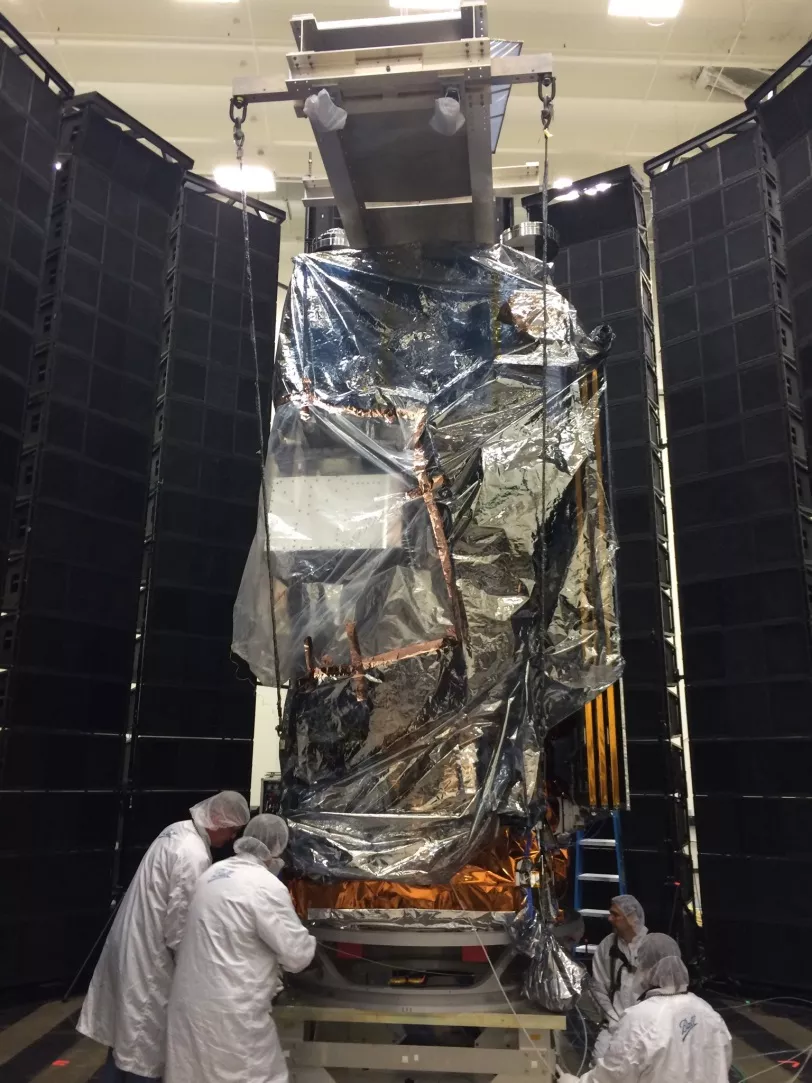
JPSS-1 (now NOAA-20) during pre-launch testing
“The JPSS’s Mission Systems Manager will assemble what’s known as an anomaly response team—a group composed of NOAA, NASA and industry personnel with in-depth knowledge of the system or instrument,” said Wrublewski. “Once assembled, the members of this team meet to discuss the issue and develop a plan to address it.”
Once resolved, the anomaly is then documented (extensively) so the operators who will control NOAA-20 after it’s declared operational will know what to do if the anomaly happens again.
From Checkout to Operational
NOAA-20’s checkout phase is expected to conclude sometime in mid-February, when all of the tests associated with the four sub-phases have been completed. At that time, Vanessa Griffin, Director of NOAA’s Office of Satellite and Product Operations (OSPO), and her deputies, will gather members of NASA’s MOST team to go over a check list to ensure that all the requirements, including instrument performance, the documentation and manuals, procedural updates, and the training of operations personnel, have been met. If they have, NASA will then officially “hand over” NOAA-20 operations to OSPO, which manages the ingestion, processing, and distribution of NOAA satellite data and derived products to domestic and foreign users.
The Orbit Raising of NOAA-20
NOAA-20’s orbit-raising is just what it sounds like—an orbital maneuver conducted to get the satellite into its proper position, precisely 50 minutes apart from its predecessor and polar-orbiting partner Suomi NPP (see the animation above provided by JPSS Program Systems Engineering (PSE) and NASA Scientific Visualization Studio, GSFC.).
If you were under the impression that NOAA-20 was launched into its final orbit after rocketing into space aboard the Delta II, you’re not wrong. This initial orbit is known as an insertion orbit, which is approximately 10 kilometers lower than the satellite’s intended, operational orbit. To get the satellite where it needs to be, engineers conduct an orbit-raising sequence consisting of five burns, or maneuvers using NOAA-20’s propulsion system.
The first and second orbit-raising burns, which can last as long as 30 seconds, serve as thruster checkouts and are used to adjust elements of NOAA-20’s orbit. The third burn adjusts the satellite’s inclination (or the angle between the satellite’s orbital plane and the equator). The fourth and fifth burns are conducted to achieve a so-called “frozen” orbit, or an orbit wherein the altitude of NOAA-20 remains constant at the same point in each orbit over a long period of time, while simultaneously maintaining half-orbit separation (the aforementioned 50 minutes) with Suomi NPP.
The length of the orbit-raising process varies on several factors. In the case of NOAA-20, orbit-raising took approximately three weeks and was completed in January 2018. Another small orbit maneuver will take place before operations are handed over to NOAA.
